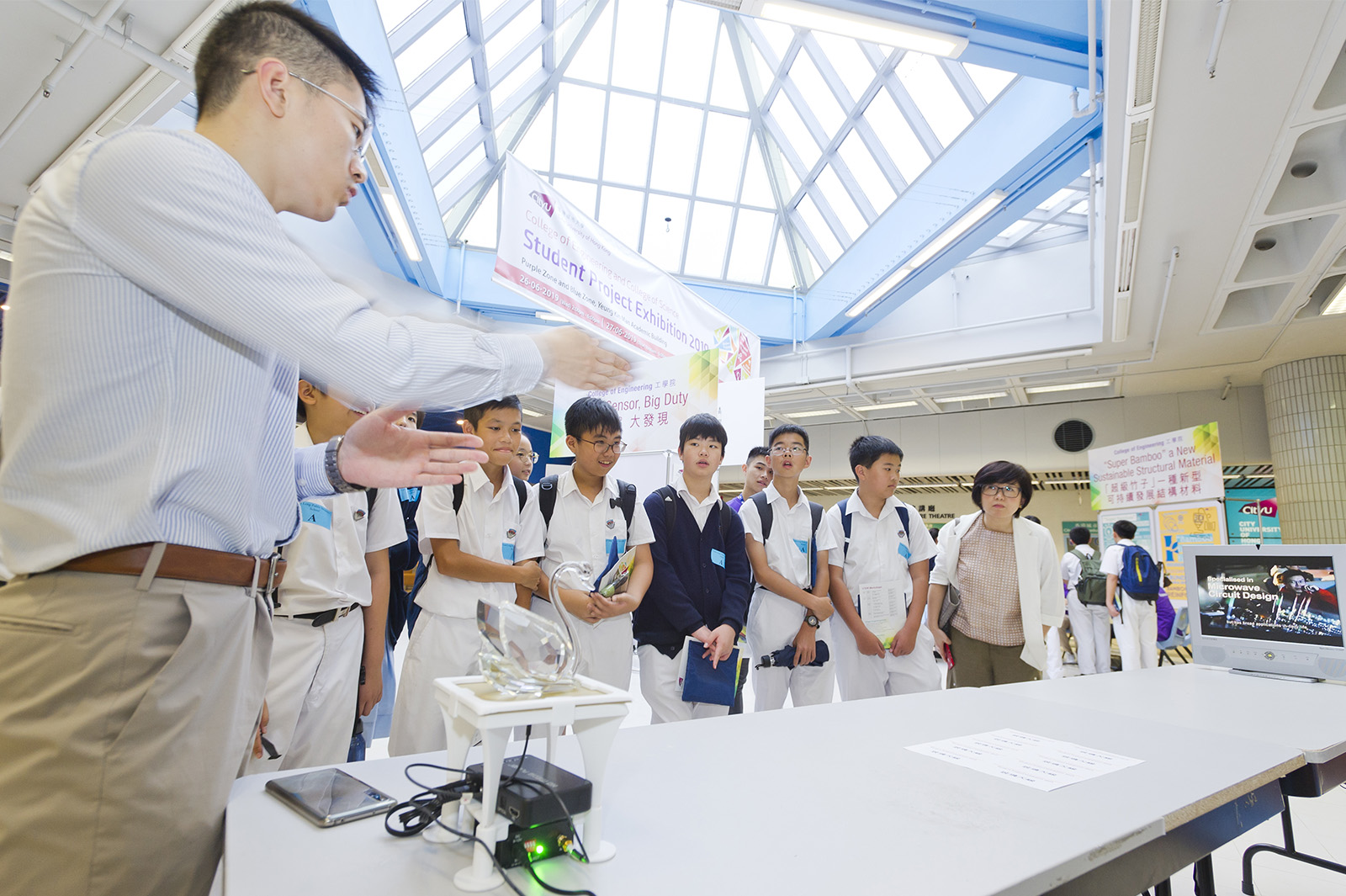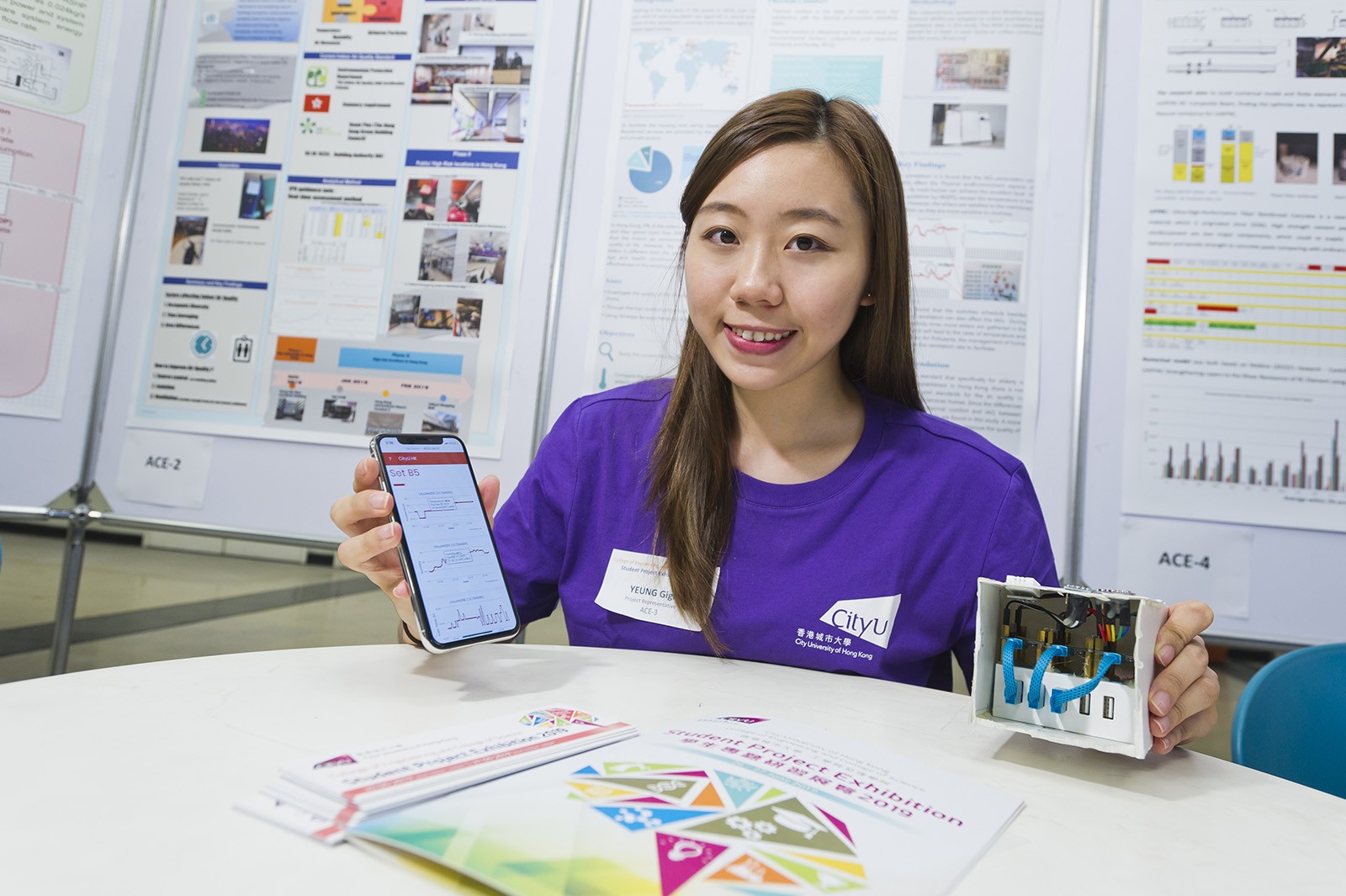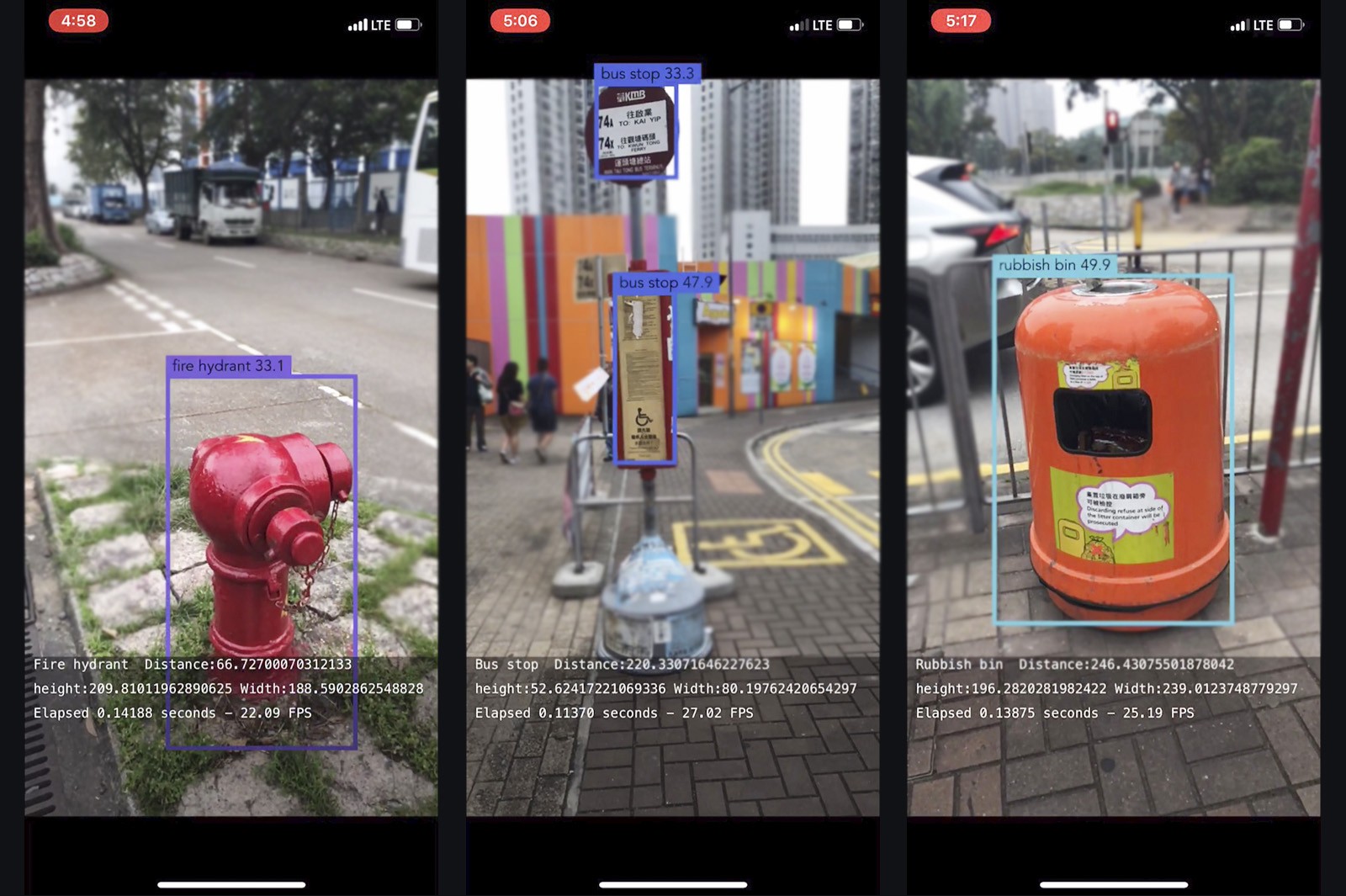Inspiring innovations at Student Project Exhibition
The creativity behind applying technology to solve real-life problems by students from the College of Science and College of Engineering at City University of Hong Kong (CityU) was unleashed at the Student Project Exhibition from 26 to 27 June.
The projects highlight how students have discovered smart solutions to help the elderly and the people in need.
Jacky Wong Shing-fung, a student in the Department of Electronic Engineering, has developed a smartphone application that performs real-time object recognition and distance detection of common outdoor objects with an aim to assist the visually impaired navigate unfamiliar locations.
“Walking on unfamiliar roads can be challenging and possibly dangerous for the visually impaired. My app offers timely notifications when obstacles such as rubbish bins and fire hydrants are on the street,” said Jacky.
The app also provides instant voice alerts on the distance to bus and minibus stops and MTR entrances.
By using an object detection algorithm and an image labelling system, Jacky has labelled over 1,200 targeted objects to form a database for computer recognition. Equipped with earphones, the app alerts users about what lies ahead.
Gigi Yeung, a student in the Department of Architecture and Civil Engineering, has developed a project called “Investigating Quality of Life for the Elderly in Care and Attention Home through Indoor Air Quality by Wireless Sensors Networks”. The study focuses on the quality of life in homes for senior citizens.
“People generally associate these homes with poor air quality, uncomfortable temperatures, and even bad smells. One summer I collected data at a number of homes for the elderly when I was a research assistant. I was inspired to explore ways to improve the quality of life of residents there,” Gigi explained.
In her research, an advanced Wireless Sensors Network (WSN) was developed and placed in six selected care homes for a week. The WSN is an all-in-one sensor connected to an online platform via a Wi-Fi network. The sensor measures indoor temperatures, humidity levels and air pollutants such as carbon dioxide, carbon monoxide, ozone, and respirable particles. Different from conventional air-quality testing services that mainly provide data for a particular time, the WSN generates continuous real-time data every 20 seconds and reflects changes in thermal comfort and concentrations of indoor air pollutants over time. Staff at the homes can refer instantly to the data and adjust the ventilation if necessary.
Over the course of the two-day exhibition, more than 50 research projects designed by students and academic staff were showcased, including:
- Design and Control of Ornithopter: A flying robot that flaps its wings with potential for ecological research.
- Constructing Simulation Model for Light Rail Services in Hong Kong: A simulation model that studies the root causes of delayed or lost trips on Hong Kong’s Light Rail and provides suggestions on effective route planning.
In addition, a series of STEM workshops were held for secondary school students.




